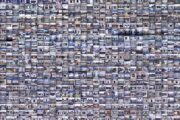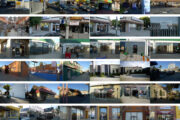This individual is not a direct affiliate of the USC Center for Religion and Civic Culture. They have contributed to one or more of our events, publications, or projects. Please contact the individual at their home institution.
Martin Krieger, Ph.D., does social-science informed aural and photographic documentation of Los Angeles, including storefront houses of worship and industrial Los Angeles. He is also a research fellow of the Center for Religion and Civic Culture. Recently, Professor Krieger has won three consecutive Mellon Mentoring Awards, for mentoring undergraduates, faculty, and graduate students. Professor Krieger has worked in the fields of planning and design theory, ethics and entrepreneurship, mathematical models of urban spatial processes, and has explored the role of the humanities in planning. His seven published books describe how planning, design, and science are actually done. Titles include Advice and Planning (1981); Marginalism and Discontinuity: Tools for the Crafts of Knowledge and Decision (1989); Doing Physics: How Physicists Take Hold of the World (1992); Entrepreneurial Vocations: Learning From the Callings of Augustine, Moses, Mothers, Antigone, Oedipus, and Prospero (1996); Constitutions of Matter: Modeling the Most Everyday of Physical Phenomena (1996); What’s Wrong With Plastic Trees?: Artifice and Authenticity in Design (2000); and Doing Mathematics: Convention, Subject, Calculation, Analogy (2003). He is currently writing a book on Taking Pictures in the City. Professor Krieger has been a fellow at the Center for Advanced Study in the Behavioral Sciences and at the National Humanities Center. He has received grants from a variety of private foundations, and has served as the Zell/Lurie Visiting Professor of Entrepreneurship at University of Michigan’s Business School. He joined the USC faculty in 1984. Martin Krieger authors an online column or blog called This Week’s Finds in Planning (430+ columns since 1997). Professor Krieger also is Curator of the School’s Gallery. In November 2006, he was named Fellow of the American Physical Society.



